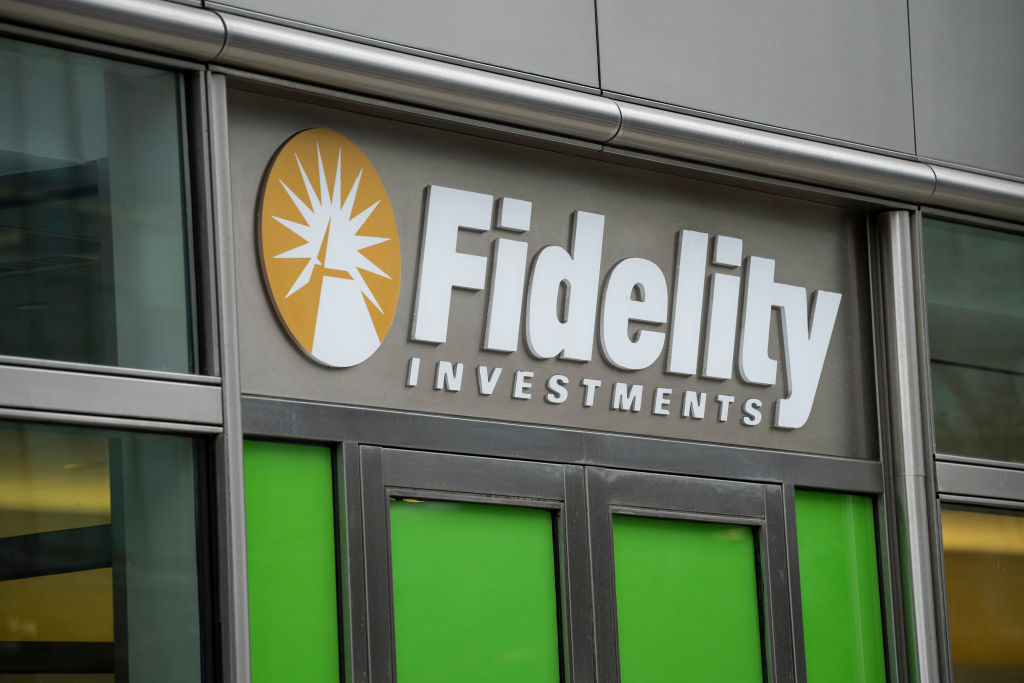5 Best Fidelity ETFs to Buy Now
The best Fidelity ETFs from the leading money manager include a little something for everyone.


Fidelity is best known for its tactical approach to investing, placing a priority on adjusting to market dynamics. And while a few of the best Fidelity ETFs give you cheap, passive exposure to broad-market benchmarks such as the Nasdaq Composite, the majority of offerings provide alternatives to typical index funds.
That's where Fidelity shines. It employs "smart beta" approaches and skilled investment managers who conduct in-depth research on sectors or investment themes to identify the best investments currently performing well.
Whether you're looking for plain passive exchange-traded funds or aggressive options designed for quick returns, the following list of five of the best Fidelity ETFs likely has something for you and your investing goals.
From just $107.88 $24.99 for Kiplinger Personal Finance
Become a smarter, better informed investor. Subscribe from just $107.88 $24.99, plus get up to 4 Special Issues

Sign up for Kiplinger’s Free Newsletters
Profit and prosper with the best of expert advice on investing, taxes, retirement, personal finance and more - straight to your e-mail.
Profit and prosper with the best of expert advice - straight to your e-mail.
To find the top Fidelity ETFs to buy, we focused on funds with assets under management of at least $4 billion, indicating they are well-established. We also included funds from several asset classes with low expense ratios.
Data is as of October 7.
Fidelity Wise Origin Bitcoin Fund

- Assets under management: $25.2 billion
- Expenses: 0.25%, or $25 annually for every $10,000 invested
The Fidelity Wise Origin Bitcoin Fund (FBTC) is one of Fidelity's newest ETF offerings, launched in January 2024.
FBTC is nevertheless one of the most popular options under the firm's umbrella. That's thanks to steady interest in crypto markets and bitcoin, in particular, which is the key underlying asset of this Fidelity ETF.
With 100% of assets invested in bitcoin, FBTC provides a simple and effective way to get exposure to the most popular cryptocurrency.
And with bitcoin having nearly doubled in the last 12 months and up 32% for the year to date, that makes this one of the best Fidelity ETFs to consider for those looking to broaden their exposure beyond typical blue chip stocks.
Learn more about FBTC at the Fidelity provider site.
Fidelity Total Bond ETF

- Assets under management: $21.4 billion
- Expenses: 0.36%
The Fidelity Total Bond ETF (FBND) is another very popular and well-established Fidelity fund due it its lower risk profile.
FBND is an actively managed bond ETF that holds some 4,500 different debt securities and yields 4.5% at present. This is nearly four times the yield of the S&P 500 Index.
The Fidelity ETF holds it all, from rock-solid bonds issued by the U.S. Treasury to a smattering of higher-risk but higher-return "junk bonds" from subpar companies.
About a third of FBND's assets are in government bonds to provide a firm foundation, but another third of the portfolio is allocated to corporate bonds, some of which are loans to distressed companies that offer super-sized yields.
All in all, it is a diversified Fidelity fund that truly gives you exposure to the entire bond market.
Learn more about FBND at the Fidelity provider site.
Fidelity MSCI Information Technology Index ETF

- Assets under management: $16.4 billion
- Expenses: 0.084%
The Fidelity MSCI Information Technology Index ETF (FTEC) is a passively managed sector fund that includes roughly 280 tech stocks.
That allows investors to look deep into the high-growth sector and gain exposure to a variety of companies, from trillion-dollar tech companies to smaller software firms.
FTEC is weighted by market value, so almost 60% of its assets are in the top 10 stocks alone – a lineup that includes tech giants Nvidia (NVDA), Apple (AAPL) and Microsoft (MSFT).
But that could be a feature, not a bug, for those who consider these leaders a strong foundation for this tech ETF to smooth out the volatility that smaller technology names might experience along the way.
Learn more about FTEC at the Fidelity provider site.
Fidelity High Dividend ETF

- Assets under management: $7.2 billion
- Expenses: 0.16%
If you're interested in yield but would prefer dividend stocks to bonds, the Fidelity High Dividend ETF (FDVV) might be worth a closer look.
This fund holds a focused list of 120 or so stocks, but it's one of the best Fidelity ETFs because of its selectivity.
Specifically, FDVV zeroes in on the very best dividend-paying stocks based on consistency of distributions, a strong history of payouts and expectations that they'll continue to grow those dividends going forward.
Top holdings at present include tech giant Microsoft, mega-bank JPMorgan Chase (JPM) and tobacco icon Philip Morris International (PM) – a who's who list of reliable dividend payers.
Learn more about FDVV at the Fidelity provider site.
Fidelity Enhanced Large Cap Core ETF

- Assets under management: $5.4 billion
- Expenses: 0.18%
As its name implies, the Fidelity Enhanced Large Cap Core ETF (FELC) focuses on core large-cap holdings such as Apple, Berkshire Hathaway (BRK.B) and Meta Platforms (META).
The fund is more selective than your typical S&P 500 ETF, however, with about 210 holdings.
The large-cap stocks are selected based on multifactor statistical models that prioritize fundamental characteristics such as profit and sales growth, as well as valuation metrics.
As is typical of Fidelity, there's no way to know the "secret sauce" for certain. However, for those looking to branch out from vanilla index funds, this is one of the best Fidelity ETFs to consider.
Learn more about FELC at the Fidelity provider site.
Related content
Profit and prosper with the best of Kiplinger's advice on investing, taxes, retirement, personal finance and much more. Delivered daily. Enter your email in the box and click Sign Me Up.

Jeff Reeves writes about equity markets and exchange-traded funds for Kiplinger. A veteran journalist with extensive capital markets experience, Jeff has written about Wall Street and investing since 2008. His work has appeared in numerous respected finance outlets, including CNBC, the Fox Business Network, the Wall Street Journal digital network, USA Today and CNN Money.
-
 I'm want to give my 3 grandkids $5K each for Christmas.
I'm want to give my 3 grandkids $5K each for Christmas.You're comfortably retired and want to give your grandkids a big Christmas check, but their parents are worried they might spend it all. We ask the pros for help.
-
 If You're Not Doing Roth Conversions, You Need to Read This
If You're Not Doing Roth Conversions, You Need to Read ThisRoth conversions and other Roth strategies can be complex, but don't dismiss these tax planning tools outright. They could really work for you and your heirs.
-
 Could Traditional Retirement Expectations Be Killing Us?
Could Traditional Retirement Expectations Be Killing Us?A retirement psychologist makes the case: A fulfilling retirement begins with a blueprint for living, rather than simply the accumulation of a large nest egg.
-
 I'm a Financial Planner: If You're Not Doing Roth Conversions, You Need to Read This
I'm a Financial Planner: If You're Not Doing Roth Conversions, You Need to Read ThisRoth conversions and other Roth strategies can be complex, but don't dismiss these tax planning tools outright. They could really work for you and your heirs.
-
 Could Traditional Retirement Expectations Be Killing Us? A Retirement Psychologist Makes the Case
Could Traditional Retirement Expectations Be Killing Us? A Retirement Psychologist Makes the CaseA retirement psychologist makes the case: A fulfilling retirement begins with a blueprint for living, rather than simply the accumulation of a large nest egg.
-
 I'm a Financial Adviser: This Is How You Can Adapt to Social Security Uncertainty
I'm a Financial Adviser: This Is How You Can Adapt to Social Security UncertaintyRather than letting the unknowns make you anxious, focus on building a flexible income strategy that can adapt to possible future Social Security changes.
-
 I'm a Financial Planner for Millionaires: Here's How to Give Your Kids Cash Gifts Without Triggering IRS Paperwork
I'm a Financial Planner for Millionaires: Here's How to Give Your Kids Cash Gifts Without Triggering IRS PaperworkMost people can gift large sums without paying tax or filing a return, especially by structuring gifts across two tax years or splitting gifts with a spouse.
-
 'Boomer Candy' Investments Might Seem Sweet, But They Can Have a Sour Aftertaste
'Boomer Candy' Investments Might Seem Sweet, But They Can Have a Sour AftertasteProducts such as index annuities, structured notes and buffered ETFs might seem appealing, but sometimes they can rob you of flexibility and trap your capital.
-
 AI Stocks Lead Nasdaq's 398-Point Nosedive: Stock Market Today
AI Stocks Lead Nasdaq's 398-Point Nosedive: Stock Market TodayThe major stock market indexes do not yet reflect the bullish tendencies of sector rotation and broadening participation.
-
 Got $100 to Gamble? These Penny Stocks Could Be Worth the Ride
Got $100 to Gamble? These Penny Stocks Could Be Worth the RideVolatile penny stocks are high-risk plays with potentially high rewards. If you have $100 you can afford to lose, these three names are worth a look.
-
 Quick Question: Are You Planning for a 20-Year Retirement or a 30-Year Retirement?
Quick Question: Are You Planning for a 20-Year Retirement or a 30-Year Retirement?You probably should be planning for a much longer retirement than you are. To avoid running out of retirement savings, you really need to make a plan.